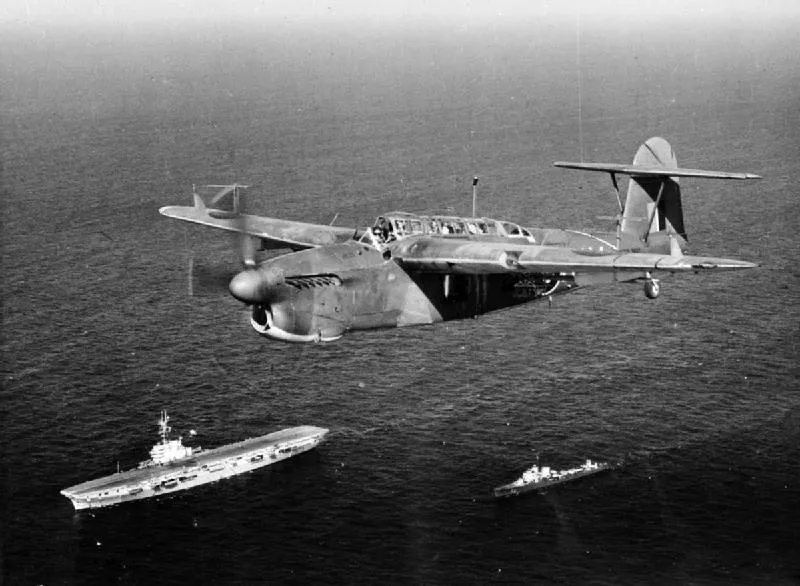The crew of 830 Squadron Barracuda aircraft LS 556 5K, flying from HMS Formidable, were lost at sea in poor weather conditions while an anti-submarine patrol
Lieutenant GN Micklem DFC MiD (RNVR-FAA) was missing, presumed Killed in Action
Service
RNVR FAA
Unit
830 (BR) Sqn- Squadron (FAA)
Base
HMS Formidable
Rank
Lieutenant
Position
Lieutenant
Service Numbers
 Shropshire, England
Shropshire, England
The crew of 830 Squadron Barracuda aircraft LS 556 5K, flying from HMS Formidable, were lost at sea in poor weather conditions while an anti-submarine patrol
Lieutenant GN Micklem DFC MiD (RNVR-FAA) was missing, presumed Killed in Action

The Fairey Barracuda was a British carrier-borne torpedo and dive bomber designed by Fairey Aviation. It was the first aircraft of this type operated by the Royal Navy's Fleet Air Arm (FAA) to be fabricated entirely from metal.
The Barracuda was developed as a replacement for the Fairey Albacore biplanes. Development was protracted due to the original powerplant intended for the type, the Rolls-Royce Exe, being cancelled; it was replaced by the less powerful Rolls-Royce Merlin engine. On 7 December 1940 the first Fairey prototype conducted its maiden flight; early testing revealed it to be somewhat underpowered. However, the definitive Barracuda Mk II had a more powerful model of the Merlin engine, while later versions were powered by the larger and even more powerful Rolls-Royce Griffon engine. The type was ordered in bulk to equip the FAA; in addition to Fairey's own production line, Barracudas were also built by Blackburn Aircraft, Boulton Paul, and Westland Aircraft.
The type participated in numerous carrier operations during the conflict, being deployed in the Atlantic Ocean, Mediterranean Sea, and the Pacific Ocean against the Germans, Italians, and Japanese respectively during the latter half of the war. One of the Barracuda's most noteworthy engagements was a large-scale attack upon the German battleship Tirpitz on 3 April 1944. In addition to the FAA, the Barracuda was also used by the Royal Air Force, the Royal Canadian Navy, the Dutch Naval Aviation Service and the French Air Force. Following its withdrawal from service during the 1950s, no intact examples of the Barracuda were preserved despite its once-large numbers, although the Fleet Air Arm Museum has ambitions to assemble a full reproduction. Wikipedia